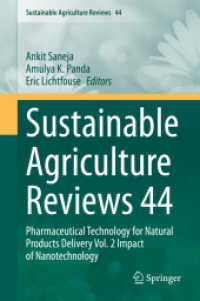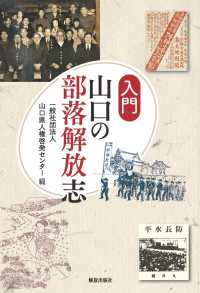Full Description
This book fills a void in the field of pre-modern literature written in Persian. It is the first scholarly publication in English language on and around the poet Nizami Ganjavi written by important Western and Non-Western scholars, enriching the field with an awareness of their knowledge and research interests.
The multidisciplinary volume initiates a much-needed dialogue it initiates a much-needed dialogue between the metropolitan and postcolonial academic points of view.
By the example of Nizami's poems it shows how different academic circles interpret Medieval authors in relation to modern-day national identity and national cultures. Unlike in Europe and USA, in the USSR citizenship and ethnicity, like two modern official different criteria of identity, became a stumbling block in the division of cultural heritage of the past. Irredentism is a central topic in the post-Soviet Union world and gives a voice to the peripheral rather than to the metropolis with its colonial arguments. The richness and usefulness of this volume is that the contributions that take this innovative standpoint are put side by side with others, which remain within the traditional literary analysis and examine Nizami's creative thoughts on human, society, women, or justice.
Contents
Part I: Nizami and Theories of Identity for the Literary-Cultural Heritage in a Discourse of Collapsing Identities
Part II: Concepts, Characters and Values of Nizami
Part III: Nizami's Heritage in the Discourse of Medieval Symbols and Regional Concepts
Part IV: Archetypes Considered as Regional Motifs through the Caucasus, the Middle East, and Europe
Part V: Love and Love Allegory in Medieval Muslim Literary Representation
Part VI: Archetypes from the Caucasus and the Indian Subcontinent
Part VII: Regional Archetypes and Recycling Motifs in Nizami's and Rustaveli's Creativity
Part VIII: Nizami's Heritage in Musical Interpretation and Applied Arts







